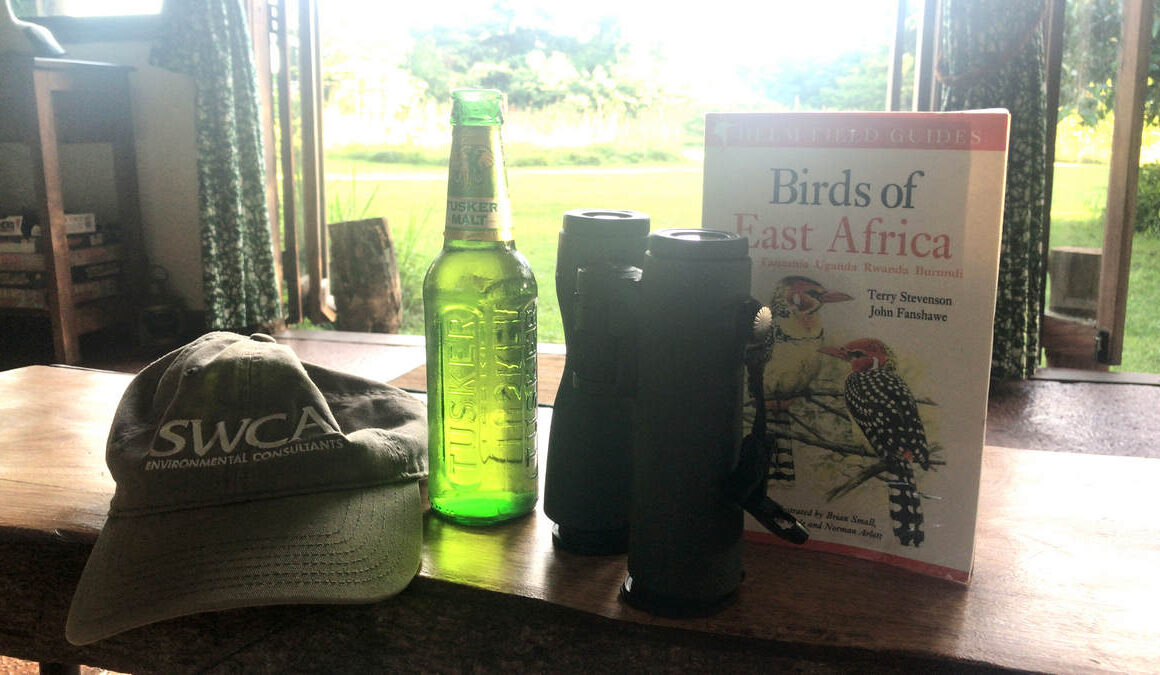
By Peter Penning
Peter Penning is a sustainability management consultant who spends many weeks abroad away from his homes in The Netherlands (work) and Portugal (holidays). Although work distracts him regularly from the observation of birds, he has managed to see a great many species regardless. He firmly believes in the necessity of birders to contribute to conservation. He passively supports BirdLife in the Netherlands and South Africa and actively in Portugal as treasurer of SPEA – Sociedade Portuguesa para o Estudo das Aves. Peter likes to meet people and have good after-birding lunches which has seriously hampered his ability to build up a truly impressive life list. Somehow, he doesn’t care.
Travel is essential for my work – although a recent pandemic proved it to be not that essential after all. Regardless, my suitcase always has binoculars and the relevant book for the region. So, with “Birds of East Africa” packed in with the clean undies the most recent trip went to Uganda. The trip was short on time, so no gorillas, chimps, or Albertine Rift endemics. A bit of inspiration from 10,000 Birds and a quick look at hotspots around Entebbe helped plan the visit.
Entry into Uganda was smooth thanks to the new system of pre-arranging the visa online. Landing late in the evening made it necessary to book a guest house near the airport and I stayed in Okra House. The selection was entirely because Okra House had a big garden that delivered three lifers over breakfast the next day. It pays off to look for green near your hotel when traveling.
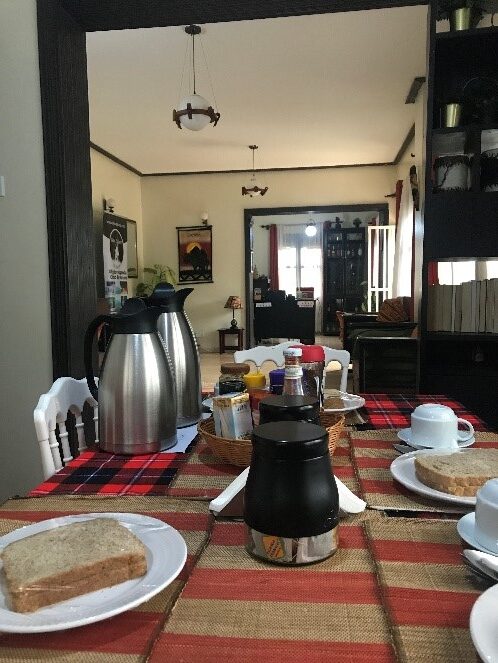
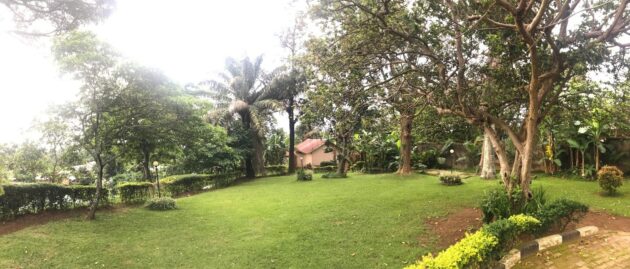
To get to the famous Mabamba Bay swamp I had to cross a bay in Lake Victoria. There are two ways to do that: the official ferry or taking a motorized canoe. The canoes go whenever you want, and nobody could tell me if the ferry runs on a schedule, so into the canoe of skipper Julius I jumped. It pays off to do some negotiation as my first received offer was 40 thousand shillings, but Julius was super happy with 20 thousand (I probably still paid my “mzungu” tax – a doubt proven correct by the return trip a few days later). A fifteen-minute crossing took me to the other side. Fifteen minutes with a Pied Kingfisher every minute, a pleasant breeze through the thinning hair, and a grin on my face. Just before setting off, I warned Nkima Forest Lodge of my pending arrival so they could send someone to pick me up.
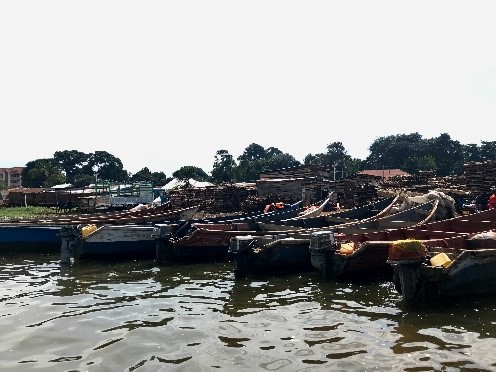
The car took some time to arrive, so I stood under the nearest and only shady tree and waited. You are never alone in Africa – it is the one constant on an incredibly diverse continent. While waiting I got offered four dozen eggs (mostly broken), a cow (I’m sure of that), two marriage proposals (less sure) and I learned why every Ugandan can afford a Rolex (it’s a chapati roll with eggs). I shared some chocolate, chatted with the boda-boda drivers, and decided never to take any of these dangerous-looking motorbikes. Especially not the one plastered in promotional materials for recreational marihuana. Grey-hooded Kingfisher on a pole, a Broad-billed Roller in a tree, and lots of Grey-headed Sparrows made for pleasant waiting. Driver Johnson showed up and we drove to the lodge.
Nkima Forest Lodge consists of six cabins on top of an extinct volcano covered in secondary forest. The lodge serves great food and has a fridge full of cold Tuskers. My cabin had a pair of Grey Parrots in a hollow tree, an Upcher’s Warbler, and a Black-bellied Paradise-flycatcher. Mosquito netting, hot water, and spotlessly clean. The whole lodge runs on solar and biogas. To the swamp is an easy and birdy walk down the hill. Back to a cold beer is a sweaty and birdy walk-up. The staff are knowledgeable about birds, especially a gentleman called Siraji. He showed me a Western Nicator and a pair of Red-shouldered Cuckoo-shrikes before I had the chance to finish the welcome drink. My favourite local bird was Ross”s Turaco which looks very much like a Congolese Dandy, very stylish. Resident Red-tailed Monkeys, Vervet Monkeys, and Bushbabies are fun to watch but they do throw “stuff” at your cabin. This is my first post, so I won’t provide details on the stuff, but you know monkeys – they have a weird sense of humor.
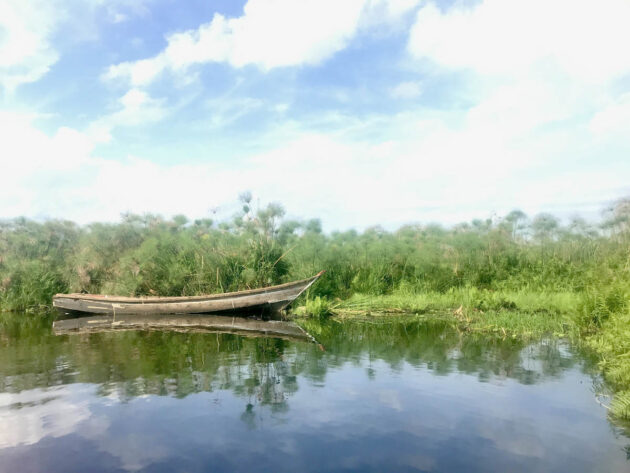
From the lodge, I took excursions to the Mabamba Bay swamp (three Shoebills), Makanaga Swamp (one Shoebill), and Mpanga Central Forestry Reserve. My guide Joseph in Mabamba tried hard to get me a Papyrus Gonolek, but recent papyrus cutting had chased them away. So, despite three Shoebills, I felt the pang of dipping. I was deeply impressed with the organization of the Shoebill watching though. The local community protects the swamp because it’s the home of their totem, the lungfish. Shoebills eat lungfish and they also attract rich people from abroad. The community charges every birder 25 thousand Uganda shilling and a boat with guide and skipper costs another 150 thousand. The limit is five boats in the swamp at any one time which is very low pressure considering the enormous size of the swamp. A far cry from the “lion jams” in safari parks.
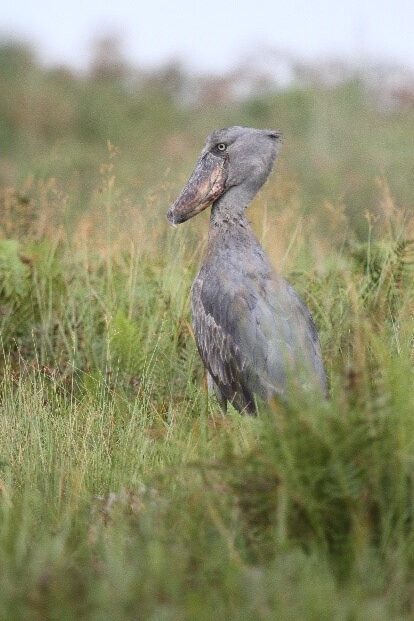
My guide for the other two locations was Shakul. He is trying to get his eco-tourism business going (e-mail mabambaswampshoebill (at) gmail.com or +256 784 751 923). Shakul guided me to Makanaga, took all the bird pictures in this post, and drove me to Mpanga. Makanaga is wide and open, Mpanga is densely forested – what a contrast. Personally, I would skip Makanaga next time and spend two days in Mpanga. Makanaga will deliver for first-timers to Africa and the numbers are impressive (hundreds of Gull-billed Terns) but Mpanga is just awesome. Shakul introduced me to Proscovia Nanyombi, Prossy for short. Prossy has been birding the forest for more than a decade. Her amazing sight and hearing delivered – I saw a lot of birds and I saw them well. Mpanga is primary forest, so everything happens high up in the canopy. Prossy uses a laser pointer and fortunately doesn’t do the frustrating “look next to the branch” type of directions that I have experienced elsewhere. She’s on e-bird and Facebook, so look her up and hire her when you want to go birding in Mpanga. My favorite bird of that day: the Hairy-breasted Barbet. Who comes up with these names and why not go for hairy-chested and have a bit of a laugh?
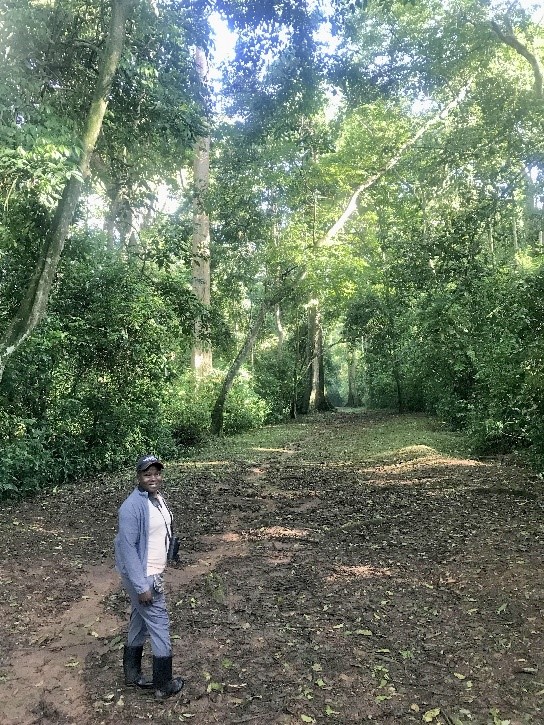
After a week with 53 birds to add to my life list, just as many beers on the tab to pay, a recipe for banana-gingerbread in my pocket, and a host of fond Ugandan memories it was time to head back. The canoe crossing cost 10 thousand shillings (what?) and pre-arranged transport at the landing took me back to Entebbe airport. I will be visiting Uganda again; it is a beautiful country with lovely people and many birds.
The lists of the birds I have seen are on e-bird.













Great post – well written, clever, informative. Post again!
Awesome intel for anyone with the time to do some mega birding while stopping in Uganda. So glad you got to go birding with Prossy–she’s such a great guide!
I am happy to point you to Prossy’s very own post: https://www.10000birds.com/bird-guides-of-the-world-prossy-nanyombi-uganda.htm
Like a Congolese Dandy? Have you done any Congo birding?